Whenever I’m working on a new creative project, I have to warm up my idea-generating brain by looking at inspiration. Often, I will start browsing magazines or Pinterest, and save random items that catch my attention. After a while I go back to evaluate the saved collection to see if I notice any interesting ideas or themes. I might be inspired to chose a few particular images and explore a colour palette or style. Eventually my final collection becomes the vision board for the project and the inspiration for my final design concept.
Why do I use a vision board? It pushes me to look beyond the surface of things. I consider the reasoning behind why and how I will include items in the final design and test them against the concept. It makes the design solution stronger and better than if I started problem solving without doing the visual research first.
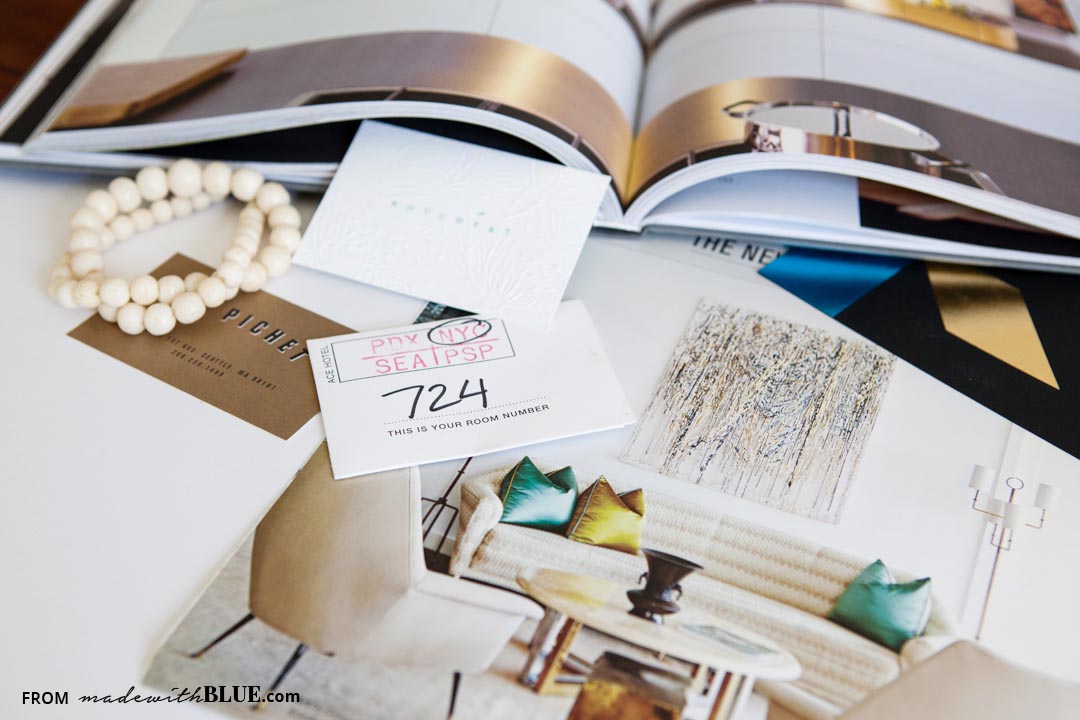
A collection of items I chose to inspire my ultimate entertaining space
What is a vision board?
Some of you may be familiar with vision boards. Maybe you browsed examples online, or even designed one in a an art class or workshop? Personal vision boards gained popularity in recent years as a way to brainstorm and document life/work goals. The purpose of creating a visual presentation of your desires is to help you manifest the ideas into reality. Design vision boards are similar in that they are a collection of visuals, and maybe words, that provide direction for a real thing that is to be created. They inspire the unifying idea or reasoning behind a design solution, which designers call the design concept. Sometimes a vision board might simply have the goal to inspire the ‘look & feel’ of something. For instance, a colour and pattern scheme, or the overall mood.
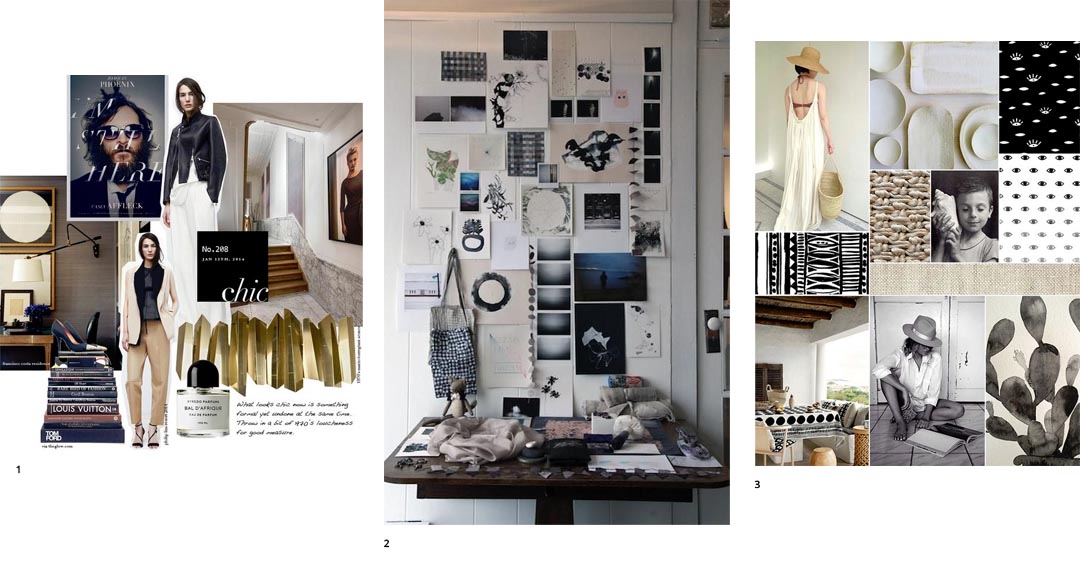
Examples of three different vision boards: 1. Nam Dang Mitchell // 2. ChellisWilson. // 3. Camille Styles
The best part of creating a vision board is that you are free to include anything in it you like. For example, you can add images of fashion, nature, building, objects, quotes, etc.. You get the idea. In fact, the best ideas often come from inspiration completely unrelated to the final design. We are forced to examine an item in detail to identify the quality we like in it and to think about how to creatively convey that in a different medium.
How to find inspiration for a vision board
I’m going to look for inspiration for the ultimate entertaining space and pretend that anything is possible for the design. This is the time to dream even if what you find wouldn’t be practical given your everyday lifestyle. Look for images that in some way catch your attention as interesting or appeal to your personal style. If time and money did not exist what would your ideal day, week, or holiday look like? Hone in on what places you might visit and what they look like. Are they formal or casual? What colour palettes inspire you? Are you looking for images that portray a sense of calm or excitement? Do you love photos of landscapes, or are you drawn to the intricate details of a beautifully designed classic piece of furniture? These are just some examples of questions you might ask yourself as you look for images. Of course your own personal preferences will be a unique combination of a variety of ideas. That’s what will make your collection of images personal and special to you.
Browsing Pinterest is probably one of my all-time favourite ways to procrastinate and I have stacks of magazines stashed in at least two rooms in our house. Finding inspiration among all the things I collect and save every day is easy for me. Editing down to just a few key images is my challenge. But, if you are going through your typical sources of design inspiration and not coming up with anything you like, try something different.
In fact, after you source images from shelter magazines and decor focused Pinterest boards, force yourself to look at things that are seemingly unrelated to interior design. For example, flipping through the style section of the Saturday paper could provide you with interesting inspiration for pattern or colour. Take a look through the photos on your phone, visit a bookstore, watch a favourite film, or look through a stack of mementos you collected in your travels. You will be surprised where you find ideas once you are specifically focused on the task while going about your day. If you find something you like and can’t buy the book or tear out a page, just take a photo of it with your phone. If you own items that you love like a favourite piece of jewellery, take a picture as well to add to your collection.
Evaluate your collected images
Once you have a collection of images you love, review them again. Look for similarities between the images. If you have a lot of similar items, eliminate some and only keep the ones that you truly love. When you first begin looking at beautiful photos it’s easy be smitten with many different styles and ideas simply because of the quality of the photos; after all, the beautiful styling, lighting, and photography is what professionals do to draw you in and make the items in the photos more appealing. Evaluate your photos once more to see if you are truly drawn to the items in the images.
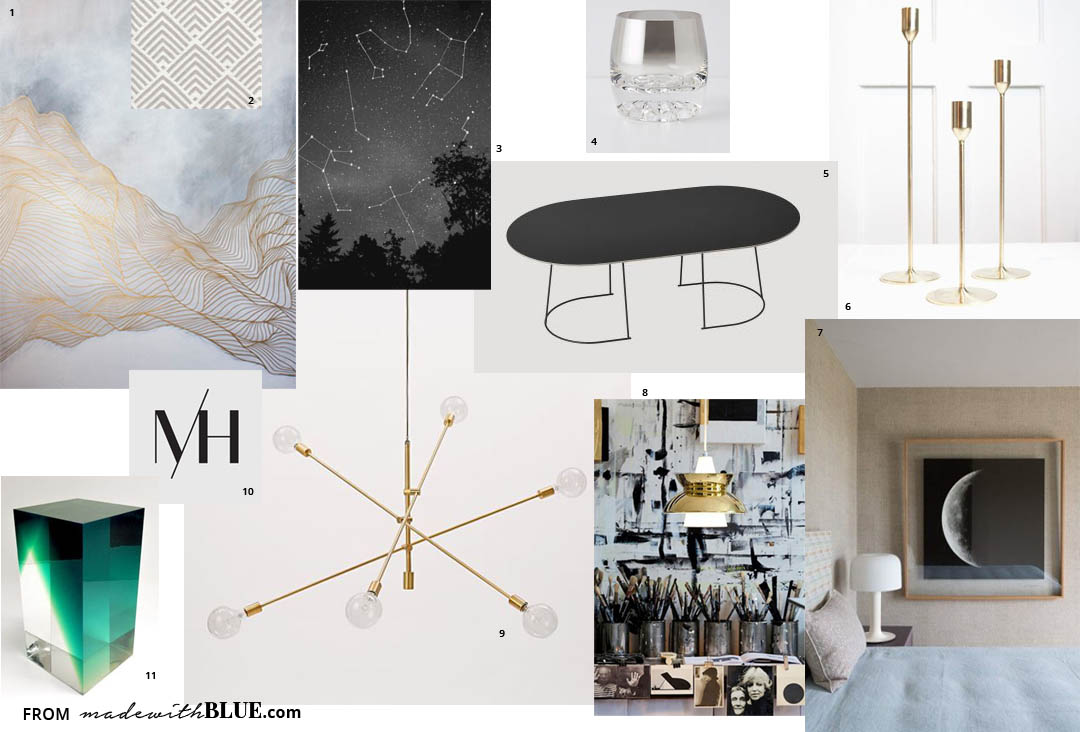
Images inspired by my first collection of items: 1. Blue and gold painting // 2. Geometric pattern // 3. Night sky // 4. Silver glass // 5. Black table // 6. Brass candle sticks // 7. Bedroom // 8. Studio // 9. Chandelier // 10. Logo // 11. Glass sculpture
Look at your inspiration images all together. Arrange them on a table, or open them all on your computer. If you collected images digitally, fox example using Pinterest, you could print them out before editing the collection. I find that working digitally is convenient and much less messy, but it limits how I see things. Going old-school paper and scissors really helps me to think about what’s going on in the image. Not everyone is like that so do what works for you.
What do you see? Write down the first 5-8 words that come to mind. For example, using my first set of collected items I wrote down metallics, symmetry, urban, classic, organic texture, modern, clean. If at first you are writing down only exactly what you see, think about the mood and feeling that your inspiration images portray. Maybe your collection feels carefree and playful, elegant, or minimal? The words will be very important when you translate the vision board into an actual design plan. Why? Because even if you can’t fit the exact items you love in your space or budget, by staying focused on the design concept (or the unifying idea that you got out of your vision board), you will be more likely to think of a creative solution that works within your constraints.
Explore the emerging ideas
Use the initial inspiration to explore the ideas that resonated with you further. Look for images where the characteristics from your collection (the words you wrote down) are expressed in new and unusual ways. Maybe it’s even the contrast of two items shown side by side that creates the tension you liked in the initial image. I liked the modern, light, and clean elements I was coming up with, but also wanted to explore the darker and more organic characteristics of my items. The new images have more texture and organic shapes.
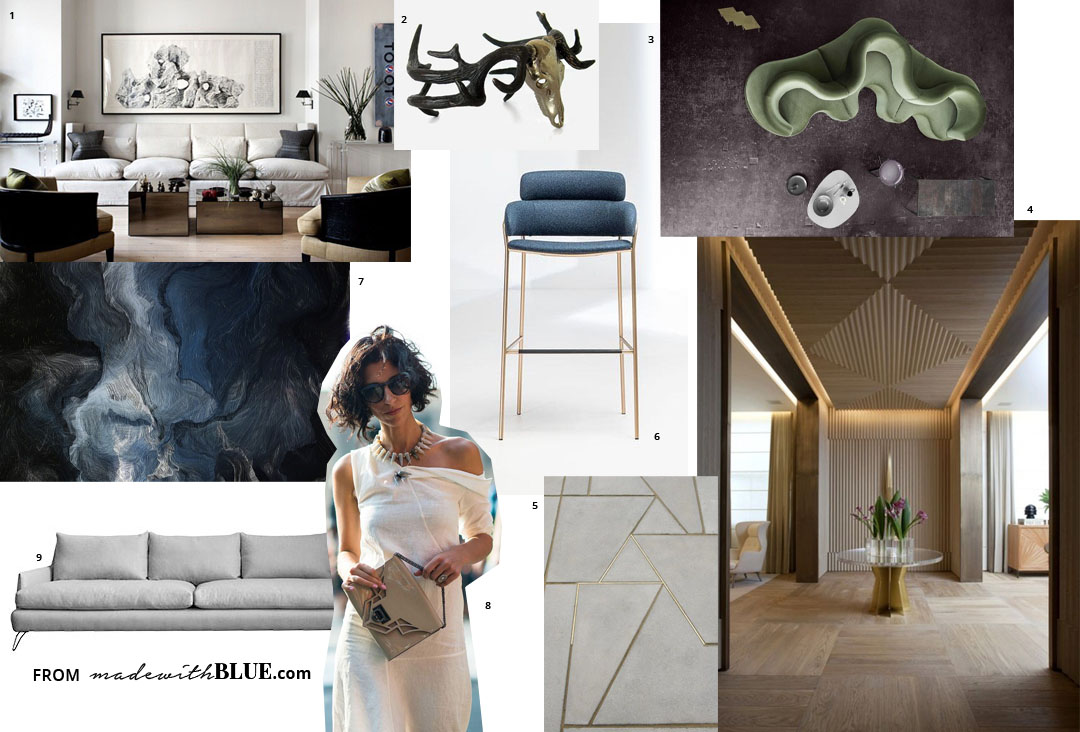
A few more of my images: 1. Living-room // 2. Deer skull silver bangle // 3. Green sofa // 4. Entry // 5. Inlaid metal floor // 6. Blue bar chair // 7. Blue texture // 8. Yasmin Sewell // 9. Montouk sofa
Pull everything together
Time to pull everything together. Look at the words you wrote down and back at the images. Do the two agree with each other? Do any of the images look or feel out of place? Maybe your original words evolved into something new as you explored ideas. Do one more edit on your stack of images before you commit to your final selections. Narrow down your group of images to about 10-12. Consider selecting 3-4 full or partial room images, 3-4 images of colours and textures you like, and 3-4 images of specific details or items. Below is my final vision board for the ultimate entertaining space. I could have done a better job looking for more interior images, but I loved the specific furniture items so much I wanted to include them instead. After all, the purpose of the vision board will be to inspire the design concept so this is a good starting point for innovation.
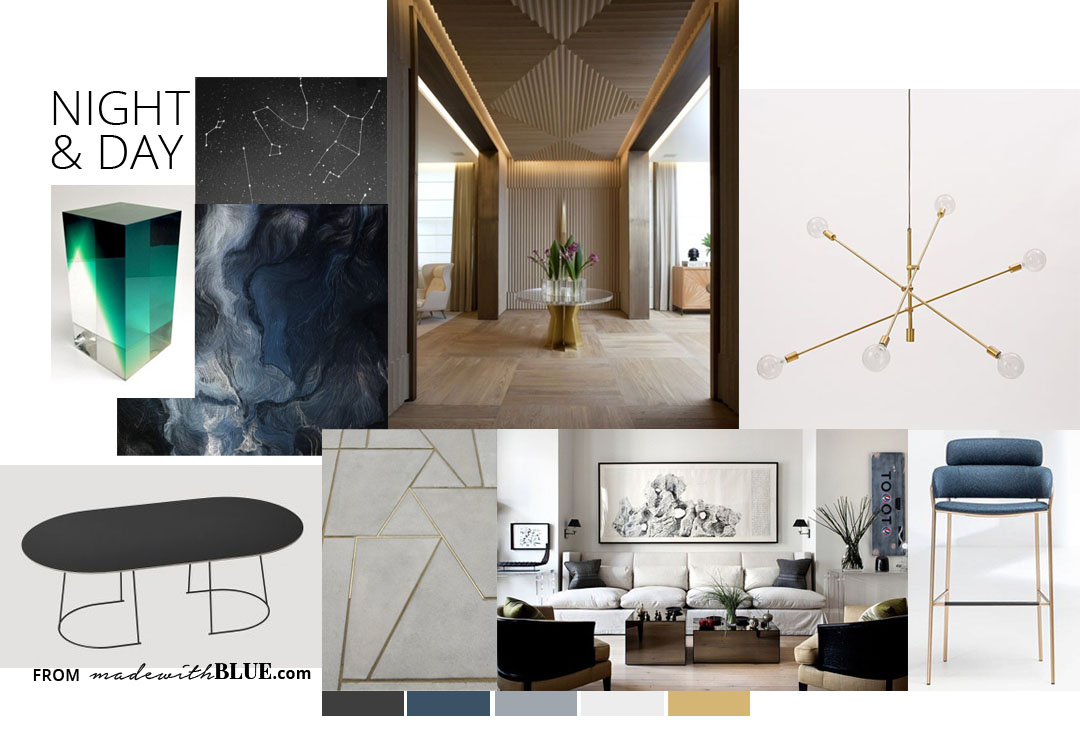
My final vision board for the living room
What will be the design concept from this vision board? Right now I am coming up with words like day and night, ocean tides and the moon, or light and shadow. How can I translate this into materials and finishes? What should my entertaining space feel like? Maybe it will be a room that is completely transformed with lighting and reflective surfaces so it has a very different feel during the day vs. at night.
What about you? What new ideas is your vision board inspiring? If you are having a hard time thinking of new ideas right now, walk away and do something else for a while. Some of my best concepts come to me when I take a break to do the dishes!
Leave a Reply